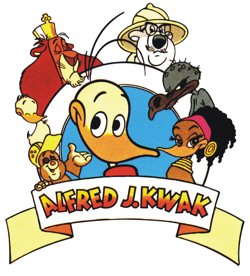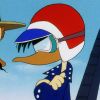Plaspoelpolder: Difference between revisions
No edit summary |
No edit summary |
||
| Line 3: | Line 3: | ||
|abovestyle = background: #bbf785; | |abovestyle = background: #bbf785; | ||
|subheader = Locations | |subheader = Locations | ||
|image = [[Image:Plaspoelpolder.jpg|200px|alt=" | |image = [[Image:Plaspoelpolder.jpg|200px|alt="Plaspoelpolder"]] | ||
| header1 = | | header1 = De Plaspoelpolder just before rainfall | ||
| label2 = Level | | label2 = Level | ||
| data2 = Area | | data2 = Area | ||
Revision as of 00:35, 10 December 2024
| Plaspoelpolder | |
|---|---|
| Locations | |
 | |
| De Plaspoelpolder just before rainfall | |
| Level | Area |
| Country | Breed Rietland |
| First appearance | Episode 1 |
Name in different languages | |
| Dutch name | Plaspoelpolder |
| Japanese name | Unknown |
| German name | Unknown |
| English name | Unknown |
The Plaspoelpolder[note 1] is the pasture where Alfred Jodocus Kwak and his siblings were born. It is the place where his parents first met and also the home of Henk de Mol. Located in the country of Breed Rietland, the Plaspoelpolder was mostly quiet until the Beton Maatschappij began constructing Groot Speelgoed Land, a massive theme park, in its center. This development displaced many of the animals living in the area, leading many to emigrate to the neighborhood of Polderstad in Groot Waterland.[1][2]
Notable features
The Plaspoelpolder is a mostly flat and untouched natural area with no buildings. Several species of animal, including sheep, frogs, birds, ducks, and bees, live there in relative peace and quiet. The only sources of noise are the nearby busy road and the occasional fighter jet.[1] The Plaspoelpolder features numerous ditches and canals. One of these canals was traversed by Johan Sebastiaan Kwak and Henk de Mol in Johan's clog, which also served as a boat, shortly after they met under a willow just outside the Plaspoelpolder.[3][4]
A significant change occurred when project leader Olaf Nijlpaard secured funding from Alfons Rokodil to obtain permits for the construction of a large theme park, Groot Speelgoed Land, in the middle of the pasture. This theme park became popular and caused many animals to need to emigrate to other countries.
History
Inhabitants
-
Alfred Jodocus Kwak (moved away)
-
Alfred's brothers and sisters (moved away)
-
Alfred Jodocus Kwak (moved away)
-
 Anna's bossom friend Clara (moved away)
Anna's bossom friend Clara (moved away) -
 Clara's elderly parents (moved away)
Clara's elderly parents (moved away) -
Anna van de Polder (moved away)
-
Mevrouw Bij (moved away)
-
Mevrouw Bij's son (moved away)
-
Dolf de Kraai (moved away)
-
Henk de Mol (moved away)
-
Jan van de Polder (moved away)
-
Johan Sebastiaan Kwak (moved away)
-
Miriam Merel (moved away)
-
Schor de Kraai (moved away)
-
Snel de Snoek (moved away)
-
Rap de Kiekendief (moved away)
-
Willem Bij (moved away)
Appearances
TV Series
Audio
Books
-
De wonderlijke avonturen van Alfred J. Kwak: De zeven eieren (1989) (Dutch)
-
De wonderlijke avonturen van Alfred J. Kwak: Omnibus 1 (1989) (Dutch)
-
Alfred J. Kwak Mijn avontuurlijke leven (1991) (Dutch)
-
Alfred J. Kwak Filmstripboek Deel 1 (2006) (Dutch)
Production background
Notes
- ↑ First named in the book De wonderlijke avonturen van de eend Alfred Jodocus Kwak: Goedemorgen, but remained unnamed in the animated series.
References
- ↑ 1.0 1.1 "De eieren". Alfred J. Kwak. Season 1. Episode 1. April 3, 1989. TV Tokyo.
- ↑ "Het verjaardagsfeestje". Alfred J. Kwak. Season 1. Episode 2. April 10, 1989. TV Tokyo.
- ↑ "> van Veen, Herman (1989). De wonderlijke avonturen van de eend Alfred Jodocus Kwak: Goedemorgen. Artwork by Harald Siepermann & Hans Bacher. Soest: Harlekijn Uitgeverij. ISBN 9063860706. page 9
- ↑ "> van Veen, Herman (1989). De wonderlijke avonturen van Alfred J. Kwak: De zeven eieren [The wonderful adventures of Alfred J. Kwak: The seven eggs] (in Nederlands). Weert: Uitgeverij van Reemst, M&P bv. ISBN 9035901053. page 4









